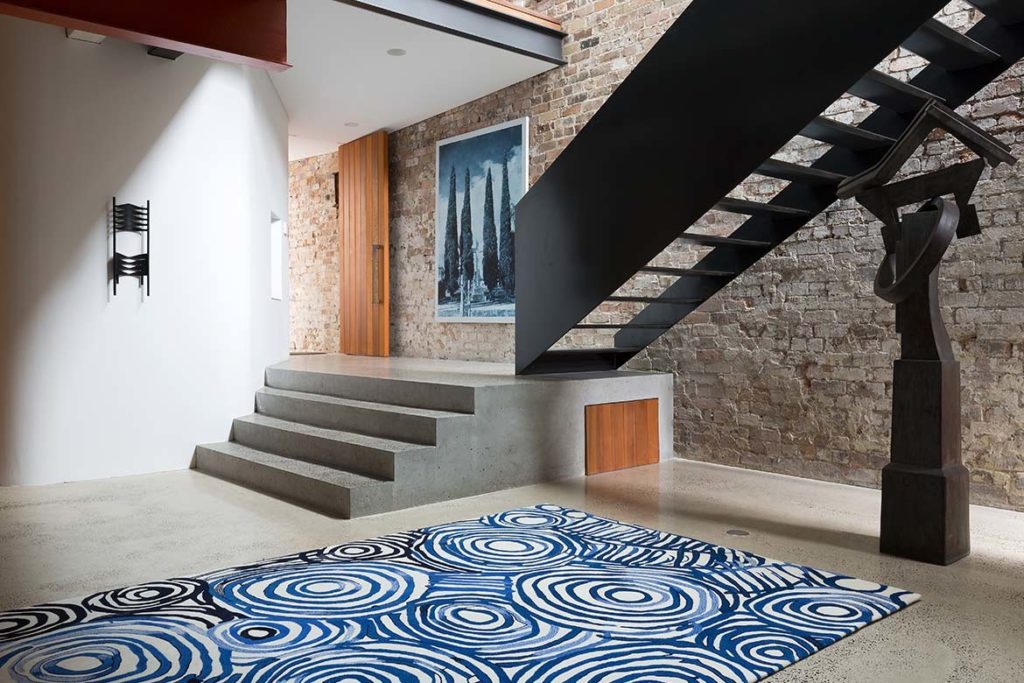Whilst unauthorised and inappropriate use of Indigenous designs and cultural appropriation are real and on-going problems, this white paper explains how reputable manufacturers, such as Designer Rugs, are addressing them.

December 15th, 2022
–
–
A vital, living part of the world’s oldest continuous culture and a means for Indigenous Australians to not just express connection to Country, but also strengthen their communities and achieve economic independence, Indigenous art continues to develop and thrive.
Beyond that, it has the unmistakable capability to work as a cultural bridge; to provide non-indigenous Australians – and indeed the broader global community – with a window to cultures of Aboriginal and Torres Straight Islander peoples.
Clearly, at least since the latter part of the 20th Century, it has succeeded in this sense. Right now, belatedly, Indigenous art is recognised, universally, as the exciting, vibrant movement it has always been. It is a common presence, across Australia, in our galleries, homes, and places of business.

While this inclusion is to be applauded, there is one curious aspect to the way many non-Indigenous people approach Indigenous art. As it stands, the work most in the broader community get to see is generally limited to paintings and sculptures. Despite the amount of great work being produced by Indigenous artists in a range of media, architects, homeowners, and business owners are cautious about including them in their homes and places of work.
Rugs and carpet are a good example. Right now, across Australia, emerging and established artists are leveraging the latest technologies and materials to create rugs that carry their own Indigenous designs. However, through a misplaced fear that incorporating designs in this way – and therefore allowing them to be walked on – may cause offence, many designers are choosing not to specify them.

This whitepaper examines the use of Indigenous designs in rugs. Acknowledging the fact that unauthorised and inappropriate use of Indigenous designs and cultural appropriation are real and on-going problems, it explains the ways that work completed through collaboration with reputable manufacturers, like Designer Rugs, addresses them; and how including these products into projects helps artists bring their ideas to fruition and provide financial benefits to First Nations people.
–
–
INDESIGN is on instagram
Follow @indesignlive
A searchable and comprehensive guide for specifying leading products and their suppliers
Keep up to date with the latest and greatest from our industry BFF's!

For Aidan Mawhinney, the secret ingredient to Living Edge’s success “comes down to people, product and place.” As the brand celebrates a significant 25-year milestone, it’s that commitment to authentic, sustainable design – and the people behind it all – that continues to anchor its legacy.

The undeniable thread connecting Herman Miller and Knoll’s design legacies across the decades now finds its profound physical embodiment at MillerKnoll’s new Design Yard Archives.

In the latest collaboration between Designer Rugs and Greg Natale, the raw rigour of modernist geometries finds its most comforting articulation in the inherent softness of floor coverings.

Richmond came alive for Saturday Indesign 2025 as showrooms, rooftops and laneways transformed into a celebration of design, creativity and connection.

Explore the prizes up for grabs at Saturday Indesign this year when you register and check into 10+ showrooms on the day.
The internet never sleeps! Here's the stuff you might have missed

With a minimalist aesthetic and an inventive approach to product, ZETR is challenging the way electrical accessories are designed, made and experienced.

Civic Vision, a major exhibition showcasing the global work of Foster + Partners, has officially opened in Sydney.

Founded by Ana Ćalić McLean and Josh McLean, In Addition is a design studio creating thoughtful, client-focused architecture and interiors.

CPD Live’s final live-presented season for 2025 continues with a powerful Day 2 lineup, delving into façade weatherproofing, apartment design trends, smart bathrooms, and digital compliance. Starting from 9 AM AEDT, these free CPD-accredited sessions will help you finish the year with fresh insight and full compliance confidence.